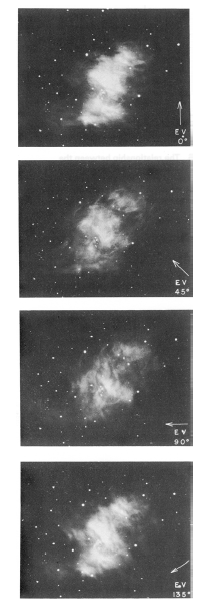
تاريخ الفيزياء

علماء الفيزياء


الفيزياء الكلاسيكية

الميكانيك

الديناميكا الحرارية


الكهربائية والمغناطيسية

الكهربائية

المغناطيسية

الكهرومغناطيسية


علم البصريات

تاريخ علم البصريات

الضوء

مواضيع عامة في علم البصريات

الصوت


الفيزياء الحديثة


النظرية النسبية

النظرية النسبية الخاصة

النظرية النسبية العامة

مواضيع عامة في النظرية النسبية

ميكانيكا الكم

الفيزياء الذرية

الفيزياء الجزيئية


الفيزياء النووية

مواضيع عامة في الفيزياء النووية

النشاط الاشعاعي


فيزياء الحالة الصلبة

الموصلات

أشباه الموصلات

العوازل

مواضيع عامة في الفيزياء الصلبة

فيزياء الجوامد


الليزر

أنواع الليزر

بعض تطبيقات الليزر

مواضيع عامة في الليزر


علم الفلك

تاريخ وعلماء علم الفلك

الثقوب السوداء


المجموعة الشمسية

الشمس

كوكب عطارد

كوكب الزهرة

كوكب الأرض

كوكب المريخ

كوكب المشتري

كوكب زحل

كوكب أورانوس

كوكب نبتون

كوكب بلوتو

القمر

كواكب ومواضيع اخرى

مواضيع عامة في علم الفلك

النجوم

البلازما

الألكترونيات

خواص المادة


الطاقة البديلة

الطاقة الشمسية

مواضيع عامة في الطاقة البديلة

المد والجزر

فيزياء الجسيمات


الفيزياء والعلوم الأخرى

الفيزياء الكيميائية

الفيزياء الرياضية

الفيزياء الحيوية

الفيزياء العامة


مواضيع عامة في الفيزياء

تجارب فيزيائية

مصطلحات وتعاريف فيزيائية

وحدات القياس الفيزيائية

طرائف الفيزياء

مواضيع اخرى
The Zeeman effect
المؤلف:
A. Roy, D. Clarke
المصدر:
Astronomy - Principles and Practice 4th ed
الجزء والصفحة:
p 236
18-8-2020
2181
The Zeeman effect
Although it is not the only mechanism that gives rise to a particular spectral line behaviour accompanied by polarizational phenomena, the Zeeman effect serves as a classical example for the rationale of undertaking spectropolarimetric measurements.
In the middle of the 19th century, Faraday examined the emission spectrum of sodium vapour which had been placed in a magnetic field. His apparatus, however, was insufficiently sensitive to detect any effect caused by the field. By repeating these experiments with more sensitive equipment, Zeeman, in 1896, demonstrated that the emission lines were broadened. Lorentz, shortly afterwards, proposed a theory, based on the electron theory of matter, which suggested that if the broadening were to be looked at closely, a splitting of the lines should be observed. His theory also predicted that the light of the split lines should be polarized. When the magnetic field is in a direction along the line of sight (a longitudinal field), two lines should be observed at wavelength positions on either side of the position for the emission line when there is no field. These lines should be circularly polarized but with opposite handednesses. When the field is across the line of sight (a transverse field) three lines

Figure 1. Evidence of strong optical polarization in the Crab nebula; four photographs taken at marked rotational settings of a polarizer. Polarized light is produced as synchrotron radiation by spiralling fast-moving electrons in a magnetic field (photographs from the Mt Wilson and Palomar Observatories).

Figure 2. The classical Zeeman effect in an emission spectrum illustrating the positions of the observed lines and the polarizational qualities of their light when the atoms are radiating in a magnetic field.
should be observed: one line should be at the normal position and be linearly polarized with a direction of vibration parallel to the field; the other lines should be placed either side of the normal position and both be linearly polarized with vibration perpendicular to the field. The splitting of the lines and the polarization properties of their light were later verified by Zeeman. Figure 2 illustrates the important features of the classical Zeeman effect.
According to Lorentz’s theory, the split lines should appear at distances from the position of the line without the field given in terms of a frequency shift by

where H is the strength of the magnetic field. Thus, the degree of splitting depends on the strength of the field. By remembering that ν = c/λ, it is easy to show that dν/dλ = −c/λ2 and, therefore, that Δλ = −λ2/c. Hence, in terms of the wavelength shift, the Zeeman splitting can be expressed as

and when H is expressed in tesla (T)
 (1)
(1)
The Zeeman effect may also be demonstrated in absorption lines and from measurements taken from spectra it has been found possible to determine the magnitude of magnetic fields of the Sun and some special stars. In practice, the splitting of spectral lines by magnetic fields is more complex than that predicted by the Lorentz theory.
 الاكثر قراءة في مواضيع عامة في علم الفلك
الاكثر قراءة في مواضيع عامة في علم الفلك
 اخر الاخبار
اخر الاخبار
اخبار العتبة العباسية المقدسة

الآخبار الصحية















 قسم الشؤون الفكرية يصدر كتاباً يوثق تاريخ السدانة في العتبة العباسية المقدسة
قسم الشؤون الفكرية يصدر كتاباً يوثق تاريخ السدانة في العتبة العباسية المقدسة "المهمة".. إصدار قصصي يوثّق القصص الفائزة في مسابقة فتوى الدفاع المقدسة للقصة القصيرة
"المهمة".. إصدار قصصي يوثّق القصص الفائزة في مسابقة فتوى الدفاع المقدسة للقصة القصيرة (نوافذ).. إصدار أدبي يوثق القصص الفائزة في مسابقة الإمام العسكري (عليه السلام)
(نوافذ).. إصدار أدبي يوثق القصص الفائزة في مسابقة الإمام العسكري (عليه السلام)


















